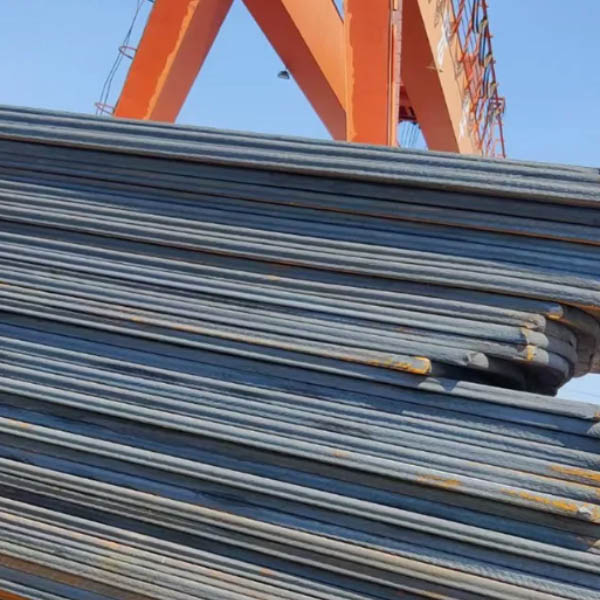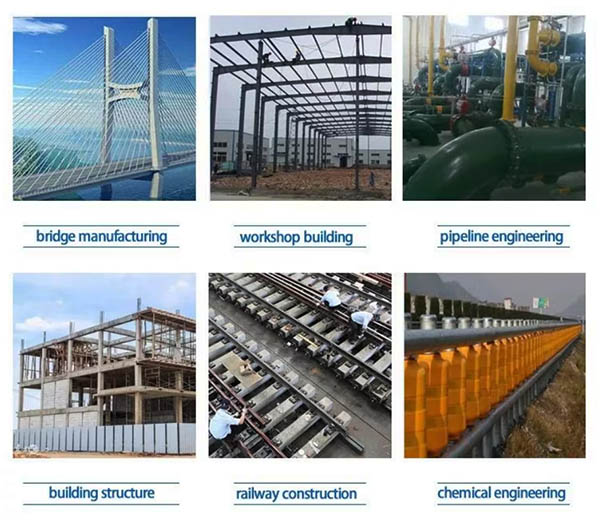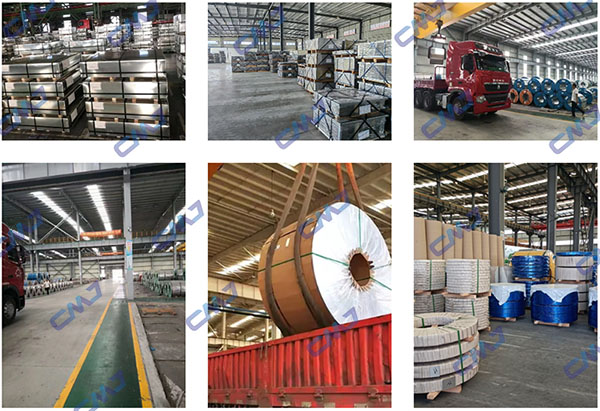U Channel Steel Guide for Distributors & Construction Companies
1889Comprehensive guide on U Channel Steel: standard sizes, materials, price factors, and applications for distributors & construction projects worldwide.
View detailsSearch the whole station

Steel buyers and engineers often face a critical decision: which steel grade best fits their application—structural, pressure vessel, or general fabrication? This guide provides a clear, at-a-glance comparison of the most common carbon steel plates—ASTM A36, A283, A572 Grade 50, and A516 Grade 70—especially when comparing A36 vs A572 or A516 vs A36 for specific project requirements.
| Feature | A516 Gr.70 | A36 |
|---|---|---|
| Designed For | Pressure vessels, boilers, tanks | General structures, frames |
| Strength | Higher tensile and impact toughness | Standard structural strength |
| Heat / Pressure Suitability | ✅ Yes | ❌ Not designed for pressure |
Key Rule: A516 cannot be replaced with A36 in boilers, pressure vessels, or tank fabrication due to regulatory and safety requirements.
Use Case Judgment:
They are not interchangeable in mechanical strength.
When substitution may be acceptable:
Light-gauge forming work where strength is not the main requirement.
When you must use A36:
Any load-bearing or welded structural component.
Safety Note:
For structural beams, load frames, or safety-critical engineering, A36 remains the safer choice.
This difference means weight reduction of approx. 10–20% for the same load capacity.
Recommended:
For bridges, cranes, tower structures, long-span beams → Choose A572 Gr.50.
Use this table for a quick side-by-side comparison of key grades. Values are typical minimums or ranges.
| Steel Grade | Yield Strength (MPa) | Tensile Strength (MPa) | Elongation (%) | Application |
|---|---|---|---|---|
| ASTM A36 | ≥ 250 | 400–550 | ≥ 20 | General structural fabrication |
| ASTM A283 Gr. C | ≥ 205 | 380–510 | ≥ 22 | Low-carbon steel for non-critical structure |
| ASTM A516 Gr. 60 | ≥ 260 | 415–585 | ≥ 21 | Pressure vessels, tanks |
| ASTM A516 Gr. 70 | ≥ 260 | 485–620 | ≥ 21 | Pressure vessels, heat exchangers |
| ASTM A572 Gr. 50 | ≥ 345 | 450–620 | ≥ 18 | Bridges, cranes, construction |
| ASTM A572 Gr. 65 | ≥ 450 | 550–710 | ≥ 17 | Columns, industrial buildings |
Send us your project drawings or specifications, and we will recommend the most cost-efficient grade.
⚠️ Important: The table below provides approximate equivalents for cross-reference. Always consult project specifications and contact our technical team for final material substitution approval.
| ASTM Standard | Grade | Approx. EN Equivalent | EN Standard Type | Notes |
|---|---|---|---|---|
| ASTM A36 | – | S235JR | EN 10025-2 (Structural Steel) | Closest equivalent in mechanical strength |
| ASTM A283 | Grade C | S235JR or S275JR | EN 10025-2 | Depends on thickness and application context |
| ASTM A516 | Grade 60 | P265GH / P295GH | EN 10028-2 (Pressure Vessel) | Used in boilers and pressure vessels |
| Grade 70 | P355GH / 16Mo3 | EN 10028-2 | Often used for higher pressure/temperature | |
| ASTM A572 | Grade 50 | S355JR / S355NL | EN 10025-2 / -3 | High strength structural equivalent |
| Grade 65 | S460NL | EN 10025-3 | Heavy-duty structural applications |

When selecting a grade, consider:
Simple Guidance:
The closest EN equivalent to ASTM A36 is S235JR under EN 10025-2. Both offer similar yield strength (~250 MPa) and are commonly used in general structural applications. Sometimes engineers also ask about A36 steel equivalent in JIS or GB standards, which are SS400 and Q235B respectively.
ASTM A572 Gr.50 is often considered equivalent to S355JR in EN standards, with comparable yield strength (~345 MPa). However, detailed mechanical and chemical requirements may differ slightly. Always confirm with project specifications.
Yes, P355GH (EN 10028-2) is widely accepted as the EN equivalent of A516 Grade 70, especially for pressure vessel applications. Both have similar tensile strength and notch toughness.
A516 Gr.70 is a pressure vessel steel, while A572 Gr.50 is a high-strength structural steel. They are not interchangeable. Use A516 for boilers and tanks; use A572 for bridges, frames, or cranes.
Yes, A283 Grade C and A36 are both mild carbon steels used for general structural purposes. A36 has slightly higher strength and is more commonly used in modern construction projects.
ASTM A572 Gr.65 roughly corresponds to S460NL in EN 10025-3, which offers similar high yield strength for demanding structural use like towers and bridges.
In some non-critical applications, A283 Gr.C may be used as a low-cost alternative to A36. However, its lower strength may not meet modern structural requirements. Always check engineering standards.
A: No. A569 vs A36 is a common query. A569 is a hot-rolled carbon steel sheet, while A36 is a structural steel plate. They differ in mechanical properties and intended applications.
Both belong to the EN 10025 series, but S355NL is a normalized steel with better low-temperature toughness than S355JR. For cold climate or critical applications, S355NL is preferred.

Understanding the differences between common grades like ASTM A36, ASTM A283, ASTM A572 Grade 50, and ASTM A516 Grade 70—and knowing when to choose between A36 vs A572 or A516 vs A36—is key to optimizing your project’s cost, performance, and compliance.
💡 Ready to Source? Contact us for competitive pricing, mill certificates (MTC), and global delivery options for all these grades.
📞 WhatsApp: +8618191906640
📩 Email: info@cjmstainlesssteel.com
Comprehensive guide on U Channel Steel: standard sizes, materials, price factors, and applications for distributors & construction projects worldwide.
View detailsCompare A514 steel grades B, E, H, and Q with this detailed guide. Learn yield strength, thickness, toughness and procurement insights for your project.
View detailsDiscover comprehensive ASTM A36 steel plate properties, chemical composition, equivalent grades, dimensions, density, weight for construction and manufacturing.
View detailsLearn what carbon steel profiles are, their main types (I-beam, channel, angle), properties, and industrial uses. Find reliable carbon steel profiles suppliers.
View details
HelloPlease log in